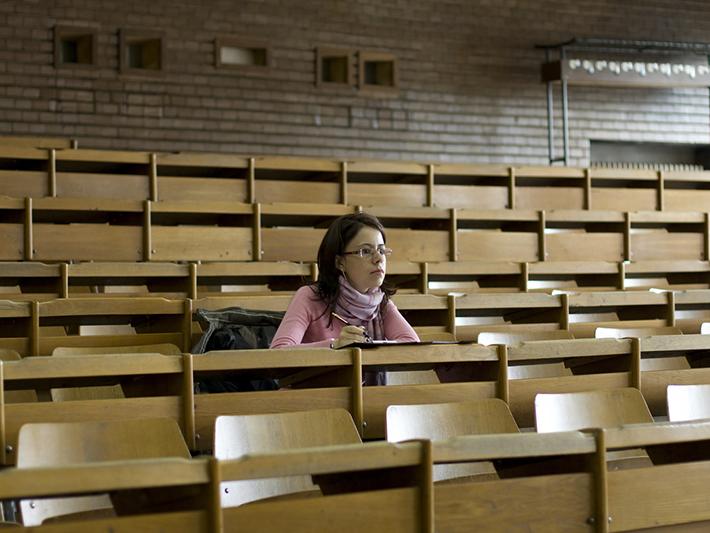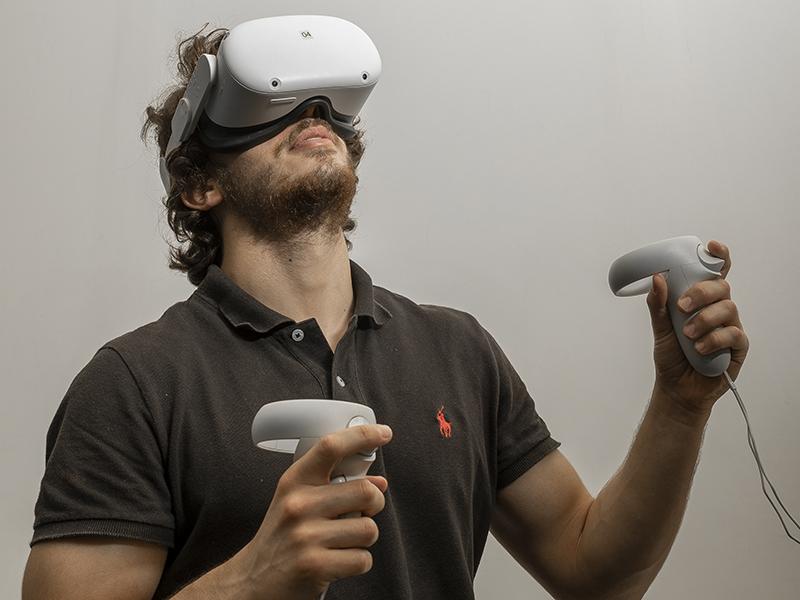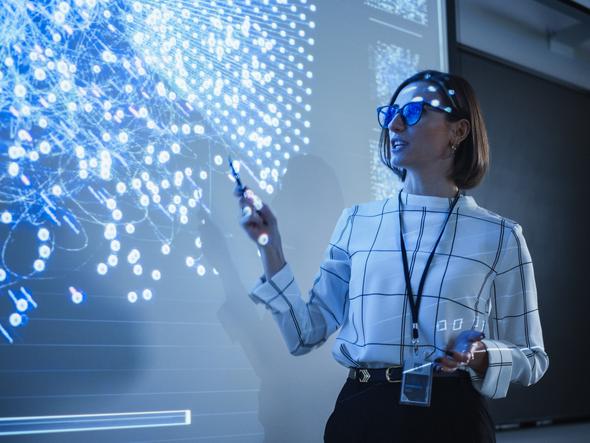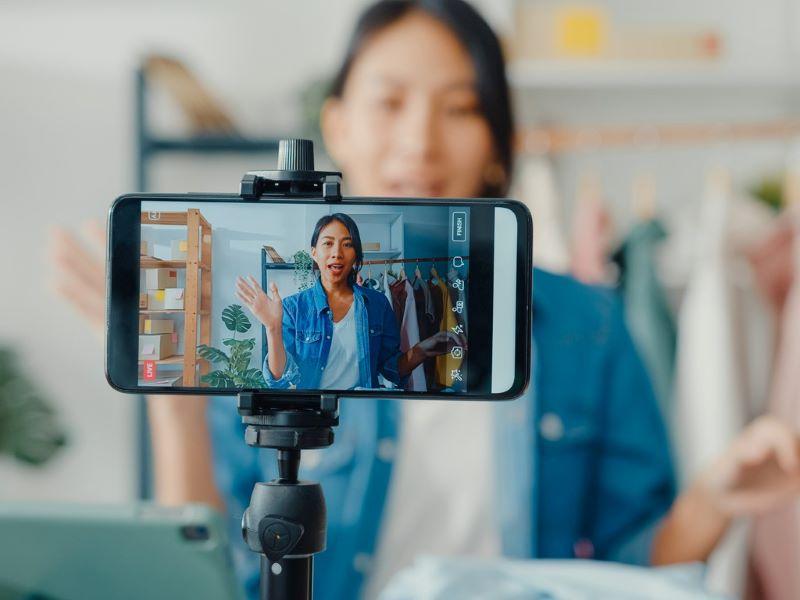
Empty classrooms and disconnected students in the age of AI
Universities face an urgent need to accelerate change in how they teach – and think about teaching – to reconnect students’ digital lifestyles with the way they learn, write Nic Fair and Larisa Yarovaya
The young tech start-up founders didn’t enjoy traditional lectures, they said, particularly when classrooms were half empty and students seemed disengaged. Instead, they learned much more through starting a tech business. We had been talking about teaching in the age of innovation and AI, but what this conversation at a start-up accelerator bootcamp highlights is a broader trend that affects even the most engaging universities: poor classroom attendance, disengaged students and declining enrolments.
A disconnect has appeared between the way students live their digital, networked lives and the way they are expected to learn at university.
Over the past 20 years, socio-technical phenomena such as the World Wide Web, smartphones, social media, pandemic-driven remote teaching, virtual reality (VR), extended reality (XR) and generative artificial intelligence (GenAI) have often seemed to pose a threat to traditional notions of teaching and learning.
- Resource collection: GenAI is here to stay, so what next?
- We should be using social media more to understand students
- Spotlight guide: How to serve the Covid generation
It is true that these technologies have transformed from whom students learn, with peer-produced videos, podcasts and social media posts often being preferred to unknown and unrelatable experts. They have redefined where students learn, with home, remote and distance learning replacing classrooms and campuses – as widely experienced during the Covid-19 pandemic. They have altered how students learn and are assessed, with traditional practices like reading textbooks, taking lecture notes and writing essays or code no longer the best approach in a world with GenAI (for example, Perplexity, DALL.E-3, Sora v2, GitHub Copilot, Canva, ChatGPT-4o or LumaLabs AI), advanced XR educational resources and the gamification of learning. They have even altered the way in which learning occurs, with social constructivist and cognitivist learning theories being challenged by theories that better account for the technological realities of the age, such as networked learning theory.
It is also true that the many barriers to the adoption of technologies for learning – including human, financial, institutional, pedagogical and personal factors – are genuinely challenging to overcome, especially at speed.
The gap between life and learning is clear: whoever we are and wherever we live, on average almost half our daily interactions (46 per cent) are with non-humans, including search engines, websites, forums or blogs, educational platforms, and social media, entertainment or gaming services, according to research from the early 2020s. We interact more often with our smartphones (34 per cent) than we do face-to-face (23 per cent). Many students have developed online side hustles to fund their way through university and develop skills better suited for modern work.
Together these technologies and behaviours form their personal learning network – used to access, consume and find patterns in information; create and share ideas and experiences; build, maintain and use connections; earn money; and grow reputation. In truth, HE educators have similar networks that they use for comparable academic and career purposes. Students and educators have more in common than is often recognised, and acknowledging these similarities can foster stronger collaboration, mutual understanding and more effective learning environments.
In contrast, even during the Covid-19 online teaching period, teaching practice did not reflect this networked reality, found research with UK HE educators. More than half of educators reported that they never used blogs (51 per cent); open educational resources (OERs) or massive open online courses (Moocs) (59 per cent); or social media (62 per cent). The vast majority of UK HE educators have never used XR for teaching and learning (90 per cent) and make less than daily use of smartphones for learning purposes (64 per cent). No wonder students feel increasingly disconnected from a largely “unnetworked” university experience.
Today, XR applications enable advanced AI-driven simulations to teach soft skills, provide gamified immersive language learning, and support medical, mathematical and musical learning – among other uses. XR has been shown to increase student engagement and support experiential learning. Meanwhile, GenAI has been used by educators to rapidly create content that enables personalised, dynamic and remote learning. In the latest developments, the large language models on which GenAI systems are based are becoming more open, customisable and capable of being run locally rather than on large servers – giving students and educators ever more powerful and usable tools. Finally, the latest developments are seeing XR combined with GenAI to enable non-expert, prompt-led, bespoke XR content creation, and classrooms are being emptied of furniture (not students!) to create open spaces for safe XR use.
So, the risk of student disconnect is ever-increasing as technology evolves. There is an urgent need to incorporate existing and emerging technology into module design, supporting networked learning and developing usable digital skills.
Such module design might steer away from traditional lectures and conventional essays or exams towards network learning and assessment pedagogies, such as:
- A “blog-comment-reflect” three-weekly learning cycle – where students: explore a specific topic by producing properly researched and referenced multimedia content using text, image, code, video/audio and XR tools (acknowledging GenAI services where used) organised into an engaging and informative blog post (week 1); read, comment on and engage in an online discussion of the posts of at least three other classmates (week 2); and produce a concluding post detailing how their understanding of the topic has changed (or been reinforced) through those digital interactions with peers (week 3)
- The integration of Moocs and OERs as reference sources to support and guide students’ content creation
- Weekly voluntary virtual co-working sessions as a substitute for traditional drop-ins
- Gamification of student online self-assessment, where students evaluate their work against clear criteria (such as argumentation, research, multimedia content quality and effectiveness, peer engagement or reflection), earning badges or progress points for achievements
- Real-time educator feedback through collaborative tools on student self-assessment scores, fostering dialogue around performance and growth
- The use of GenAI and XR content creation tools to deliver bespoke XR resources through on-campus sessions in open learning spaces filled with students in headsets rather than with empty desks and chairs.
We suggest that if educators (demand and) receive the necessary training, equipment and facilities to support networked learning module design and the adoption of emerging technologies, the disconnect between life and learning might be reduced, useful skills developed and engagement with learning reinvigorated.
Nicholas S. R. Fair is a web scientist and a senior knowledge engineer in electronics and computer science and Larisa Yarovaya is an associate professor in banking and finance, both at the University of Southampton.
If you would like advice and insight from academics and university staff delivered direct to your inbox each week, sign up for the Campus newsletter.




